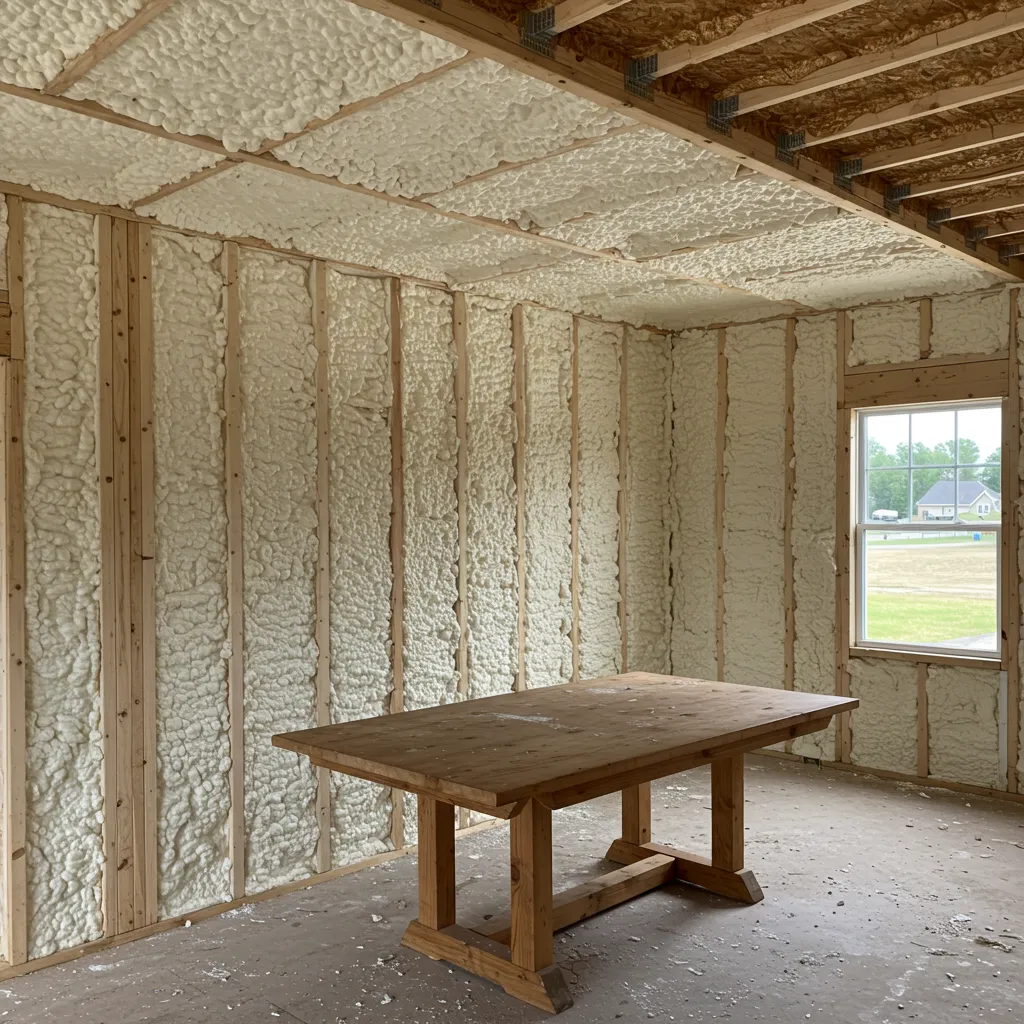Spray foam insulation offers high thermal resistance and air sealing capabilities, but it is not without downsides. The most notable disadvantages include higher upfront costs, installation complexity, potential off-gassing, and long-term maintenance challenges if not installed correctly. Improper application can lead to moisture retention, structural issues, or indoor air quality concerns.
This guide outlines both the technical and practical considerations of spray foam insulation. It draws on field experience and performance data to provide informed insights—backed by industry standards and hands-on expertise with real-world installations across residential, commercial, and industrial environments.
Key Drawbacks of Spray Foam Insulation
| Factor | Downside | Impact |
|---|---|---|
| Upfront Cost | 2–3x higher than fiberglass or cellulose | Higher initial investment |
| Installation Sensitivity | Requires precise application by trained professionals | Risk of poor performance or material shrinkage |
| Chemical Off-Gassing | VOCs and isocyanates released during curing | Requires vacating premises temporarily |
| Moisture Retention | Closed-cell traps moisture if leaks occur behind foam | Can cause wood rot or mold over time |
| Structural Rigidity | Closed-cell adds rigidity that may crack under building movement | Risk of stress-related cracks in certain climates |
| Rework or Removal | Difficult to modify or remove once installed | Expensive and labor-intensive correction process |
Technical Specifications of Spray Foam Types
| Specification | Closed-Cell Spray Foam | Open-Cell Spray Foam |
|---|---|---|
| R-Value per inch | R-6.5 to R-7.0 | R-3.5 to R-4.0 |
| Density | ~2.0 lbs/ft³ | ~0.5 lbs/ft³ |
| Water Resistance | High (acts as vapor barrier) | Low (vapor permeable) |
| Air Barrier | Excellent | Good |
| Soundproofing | Moderate | Excellent |
| Expansion Rate | Low (~1x volume) | High (~100x volume) |
| Best Use Cases | Exterior walls, basements, roofs | Interior walls, attics, sound control |
Climate-Specific Considerations for North Carolina
Eastern and central North Carolina—including Raleigh—experiences hot, humid summers and mild winters. This climate demands insulation that:
- Resists moisture infiltration during high-humidity months.
- Provides year-round energy efficiency across varying temperature ranges.
- Controls indoor humidity levels effectively.
Bonus Tip: In humid zones like Raleigh, closed-cell spray foam is often better suited for roof decks and crawl spaces because it acts as a vapor barrier and structural reinforcement, reducing mold risk.
Common Installation Challenges Observed On-Site
Inadequate Surface Prep
Dirty, moist, or improperly cleaned surfaces reduce foam adhesion. Installers must ensure dry, debris-free substrates for optimal bonding.
Thickness Irregularities
Spray foam must be applied in uniform passes. Uneven layers can create cold spots or bulges that hinder drywall or panel installation.
Bonus Tip: Always verify that installers use thermal imaging post-application to check for coverage gaps—especially around joists and corners.
Ventilation and Cure Time
Occupants should not enter treated areas for 24–48 hours post-installation to avoid inhaling isocyanate fumes. Mechanical ventilation should run during this period.
Things to Consider Before Making a Decision
- Building Age & Type: Older structures with irregular framing may need hybrid insulation strategies for compatibility.
- Future Renovations: Spray foam is difficult to remove—plan all plumbing/electrical changes beforehand.
- Budget Allocation: Higher cost may pay off long-term, but verify ROI based on your climate, energy rates, and usage patterns.
- Installer Certification: Only use certified spray foam contractors who understand building science and local codes.
Real-World Data Points Supporting Spray Foam Evaluation
- EPA Study (2023): Buildings with spray foam insulation showed average energy savings of 15–25% over traditional materials when installed correctly. [Source: EPA Energy Star Research]
- NIH Research (2022): Identified isocyanates in poorly ventilated installs as a primary cause of post-installation respiratory issues. [Source: National Institutes of Health]
Closely Related Services Available
Raleigh Excel Spray Foam Insulation provides tailored solutions for the most critical application areas:
- Closed-Cell Spray Foam Insulation: Delivers high R-value and vapor barrier protection; ideal for basements and roofs.
- Open-Cell Spray Foam Insulation: Suitable for interior wall soundproofing and flexible framing environments.
- Roof Insulation: Designed for climate-exposed surfaces; helps prevent heat gain and moisture accumulation.
- Basement Insulation: Controls humidity and prevents thermal bridging in subterranean spaces.
Common Questions People Ask Before Choosing Spray Foam
How long does spray foam insulation last?
Typically 20–30 years or more with proper installation and no physical disturbance.
Can I install spray foam in just one part of the home?
Yes. Many choose strategic areas like attics or crawl spaces for maximum efficiency.
Does spray foam insulation reduce noise?
Open-cell types provide excellent sound dampening for interior applications.
Is spray foam worth it in mild climates like North Carolina?
Yes, especially for humidity control and long-term energy savings in both summer and winter.
Get Expert Insulation Guidance
Need clarity on whether spray foam is the right fit for your building? Get technical insights from licensed professionals who understand building dynamics, climate challenges, and code compliance in the Raleigh region.
Contact Information:
Raleigh Excel Spray Foam Insulation
📧 [email protected]
📞 (919) 301-9435
Let experts walk you through site-specific recommendations backed by real-world experience.
Frequently Asked Questions
What happens if spray foam is applied too thick?
It can over-expand, trap moisture, or delaminate from surfaces, leading to failure.
Can rodents chew through spray foam?
It is not a food source, but it does not prevent rodents if entry points exist elsewhere.
Is it safe to be inside during installation?
No. Occupants should vacate until the curing process is complete and space is ventilated.
How do I know if my foam insulation is off-gassing?
A strong chemical odor post-install may signal off-gassing. Proper ventilation and testing can confirm.
Can spray foam be applied in cold weather?
Yes, but material temperature and surface conditions must be managed carefully by trained professionals.




